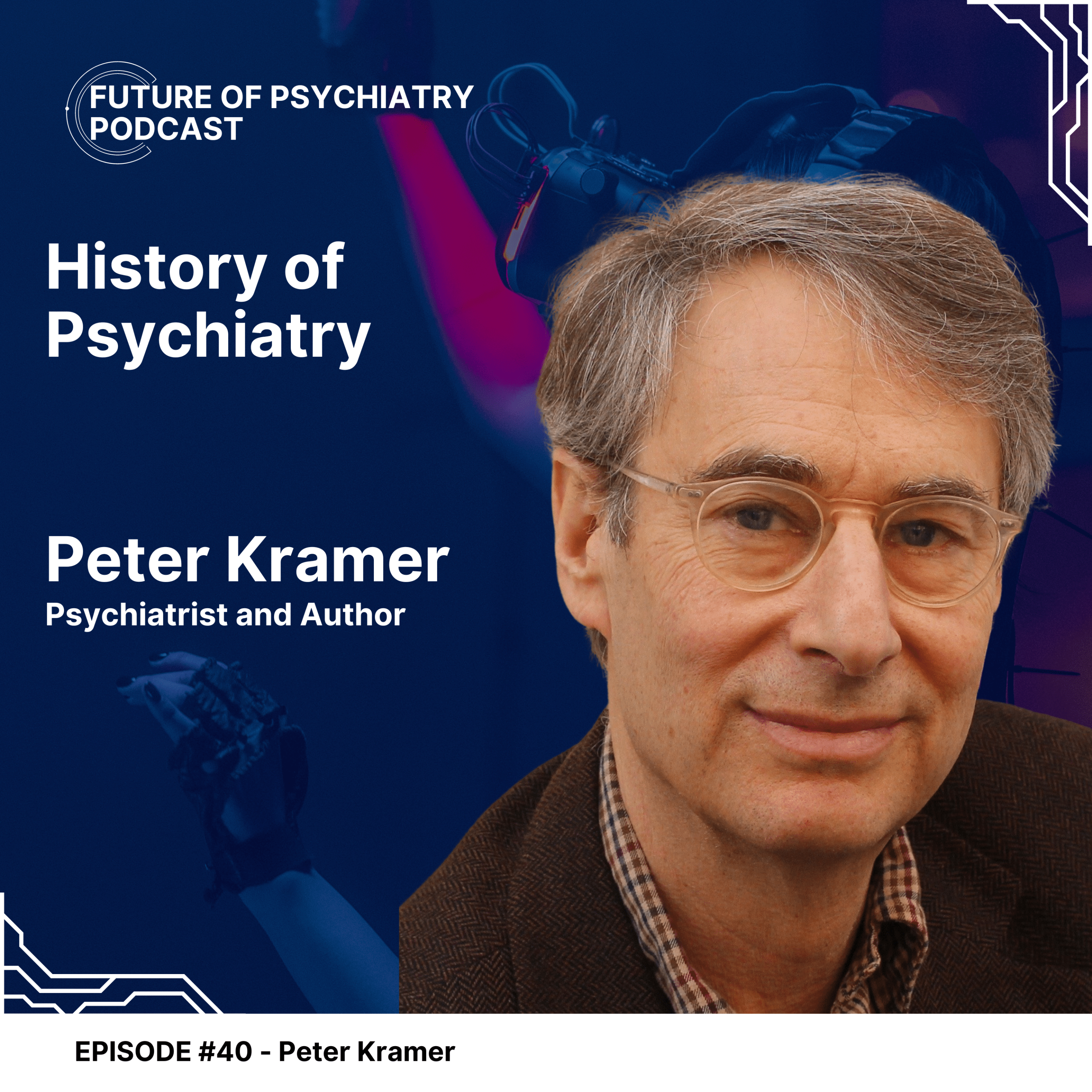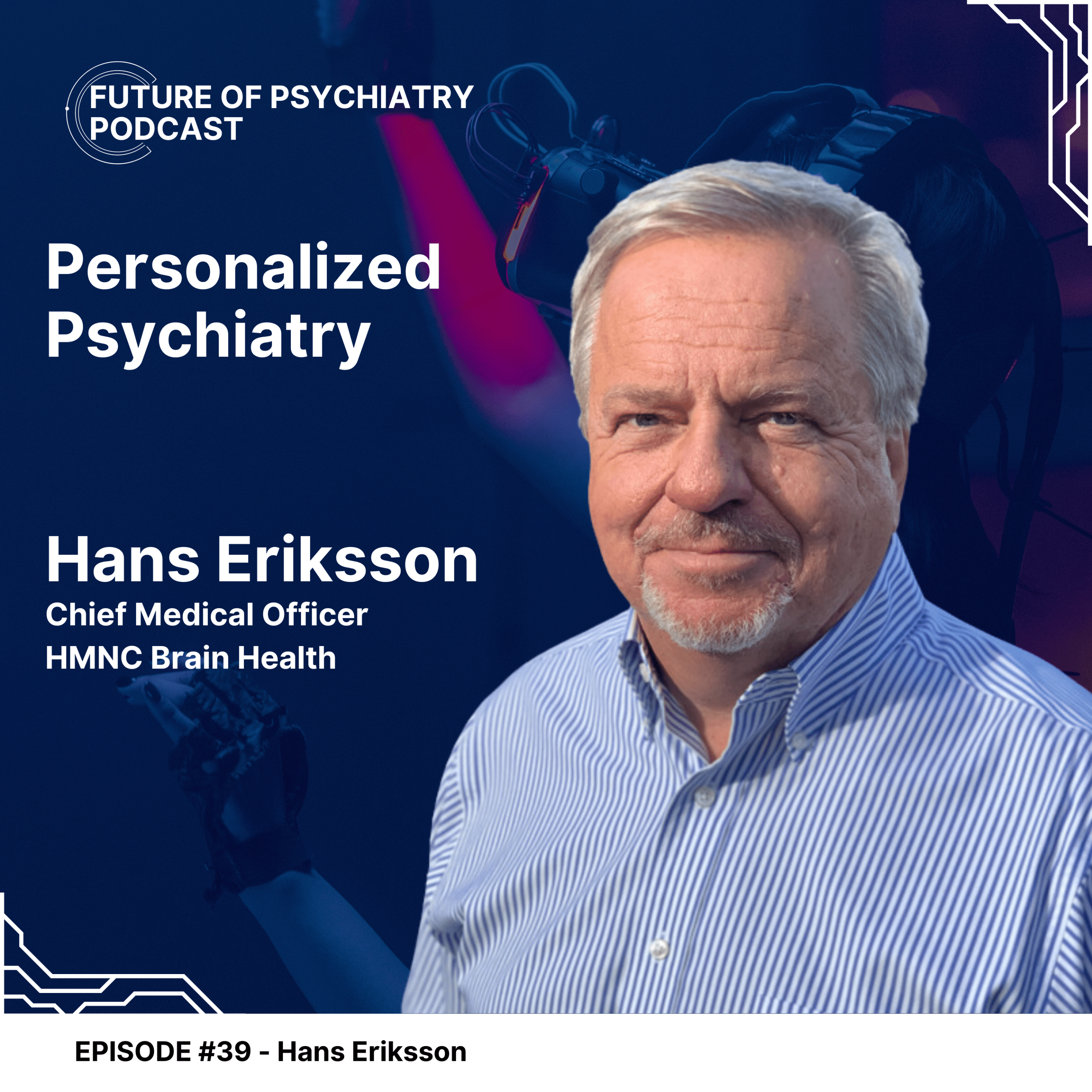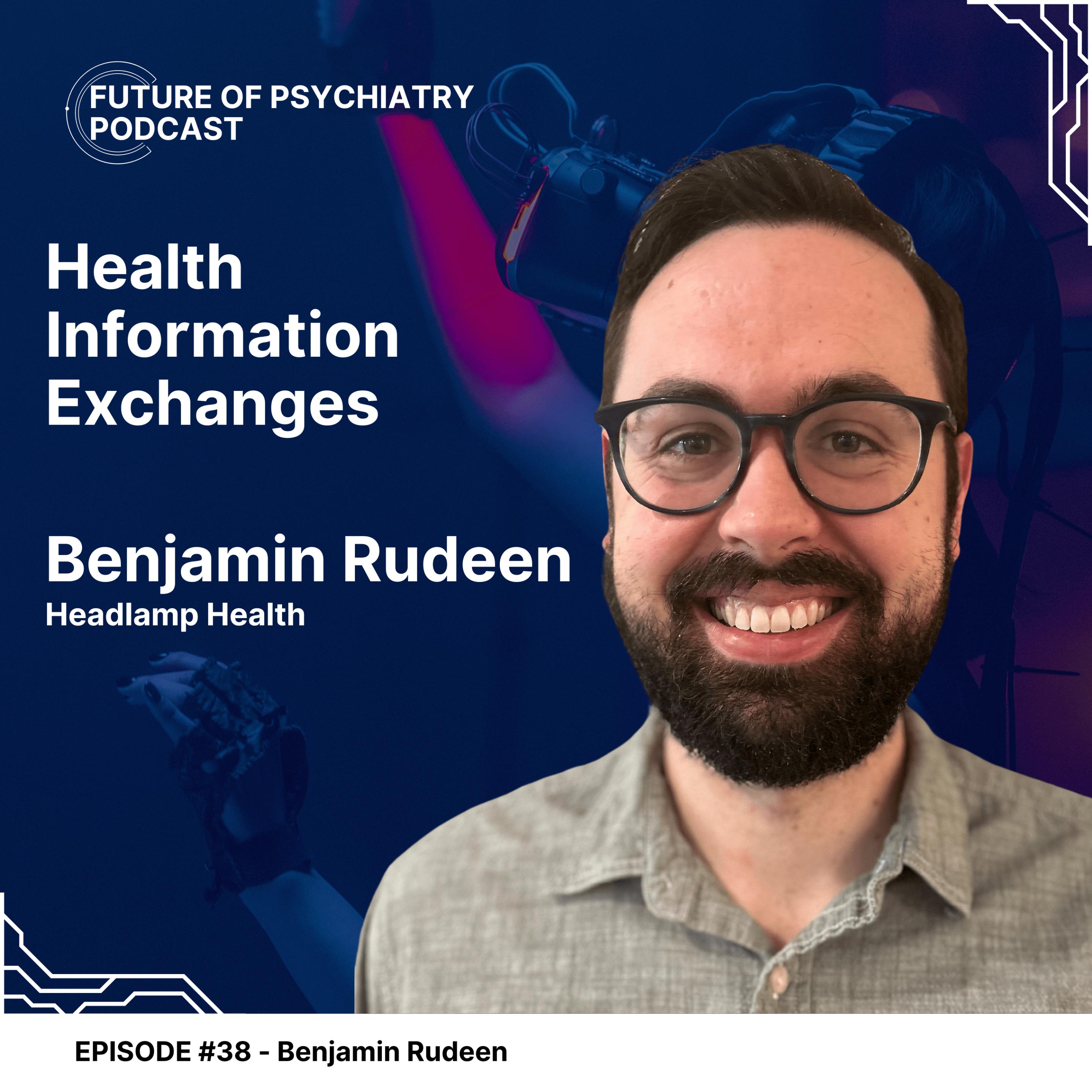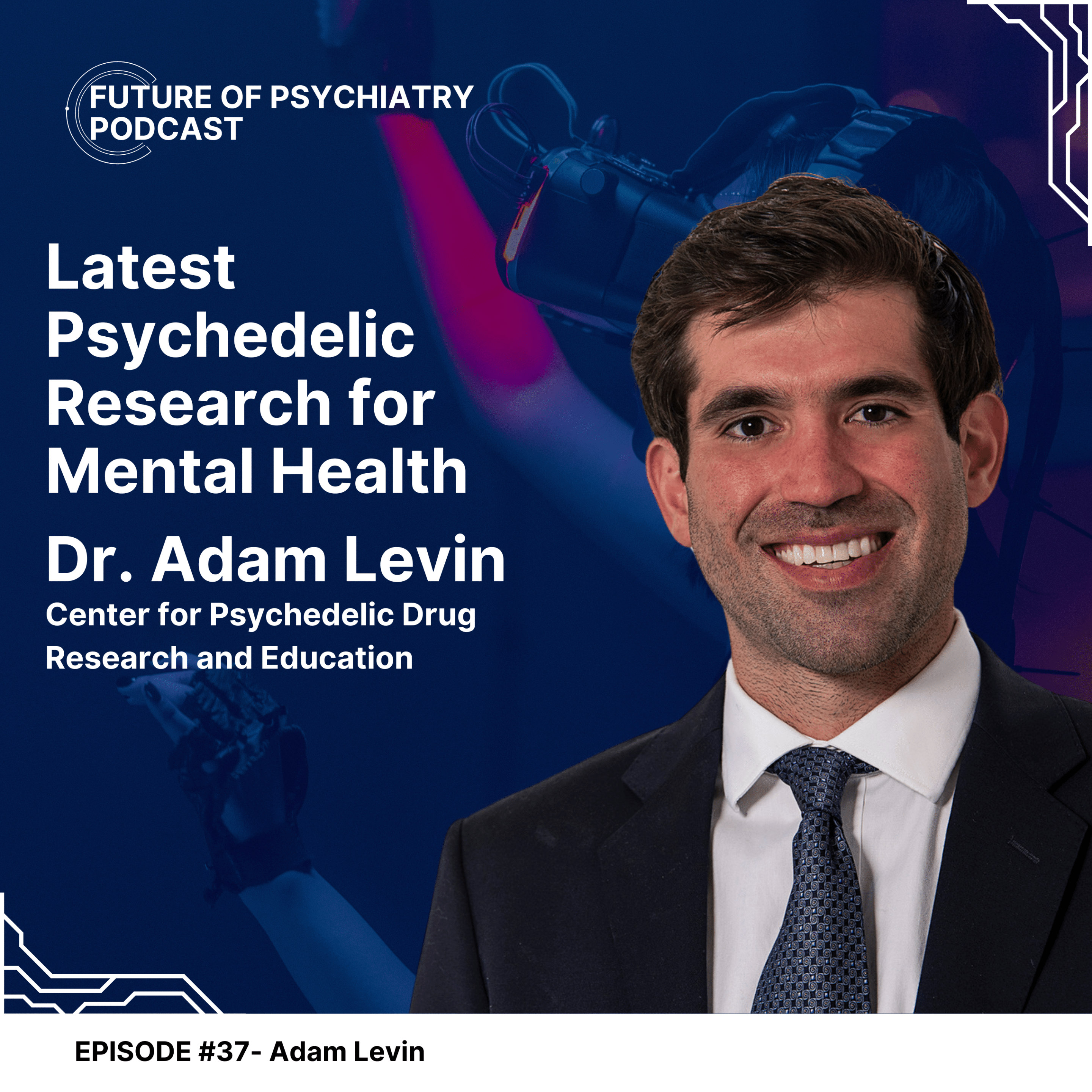#FuturePsychiatryPodcast discusses novel technology and new ideas in the field of mental health. New episodes are released every Monday on YouTube, Apple Podcasts, etc.
Summary
Dr. John Hsu, founder of iPill, discusses this innovative method of securely delivering medications to patients. The device contains a month’s supply of medications, and dispenses a single dose to the patient after they use a phone biometric security function to unlock it. The device is tamper proof and will coat the medications with a substance rendering them inert. This novel idea addresses the billions of unused opioid medications sitting in medicine cabinets that could be misused.
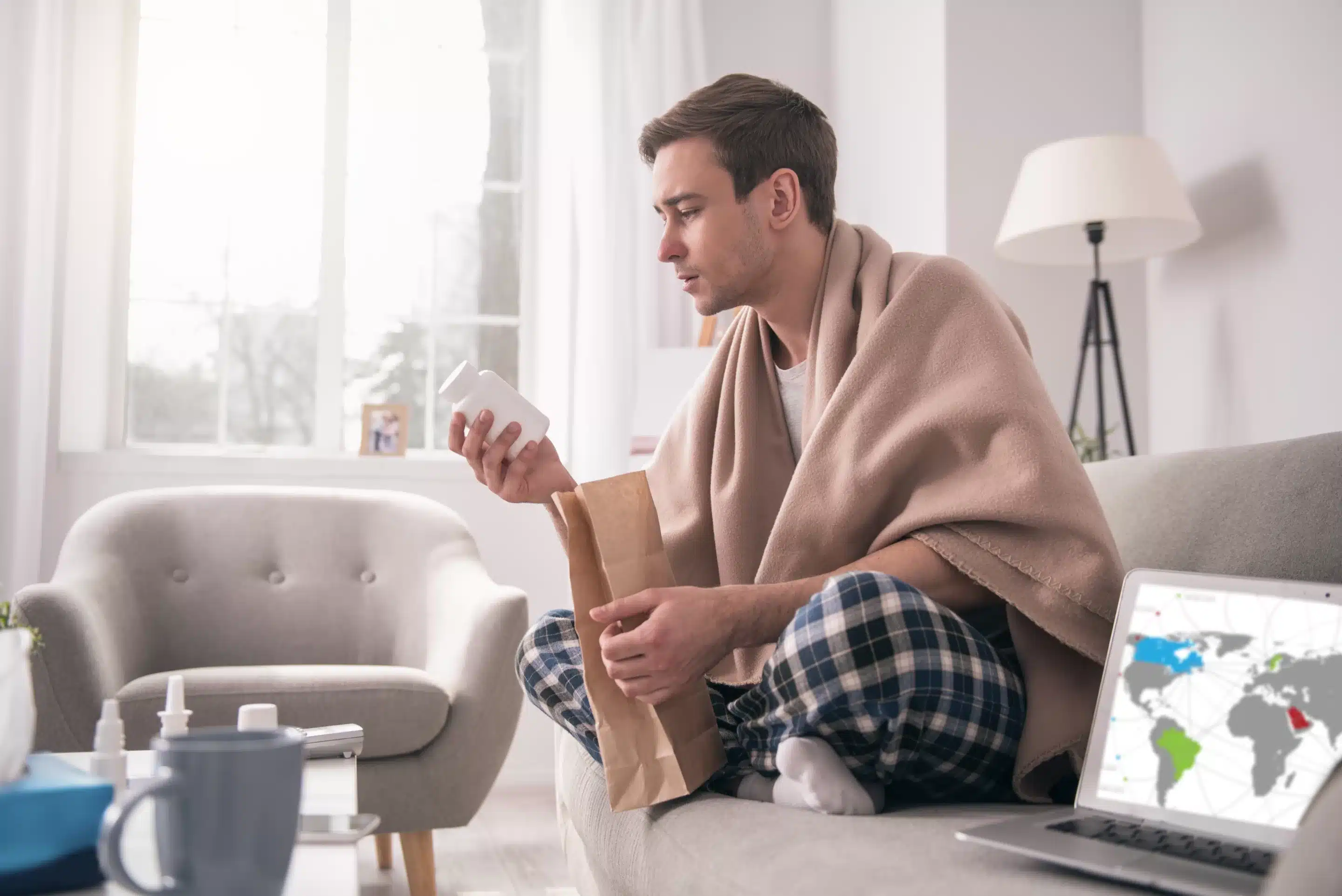
Chapters / Key Moments
Timing Corresponds to YouTube Video
00:00 Teaser – Hopeful for the Future
00:46 Introduction
05:18 How did you realize it’s a problem?
07:46 iPill promotes communication between pt and clincian
10:32 where lack of togetherness came from?
13:35 who is it made for specifically?
15:24 using it for OUD vs pain
17:12 only 1.5% get OUD treatment in prison
19:02 Limiting factor in preventing ipill from being widely distributed
19:47 how it works
24:53 taking different doses throughout the day
25:53 greatest fear
28:24 how he got the idea
31:35 treating vs preventing
32:54 What do you want people to know?
36:51 hopeful for the future?
38:01 psychosocial treatments help too
39:51 partner with another service?
41:49 partnership with Bureau of Prisons?

Transcript
Bassi: Are you hopeful for the future with this industry?
Hsu: I am hopeful for increasing OUD treatment access points with the ipill dispenser I am hopeful that people will begin to understand that We need to treat pain and we need to treat OUD patients I’m really hopeful with the focus on mental health and behavioral health because of covid. What we really need to do is add the physical support because right now, OUD treatment is really just mental psychosocial support and medication therapy management You write a prescription, you hope your patient takes the prescription as prescribed. but you can never tell. With the iPill, now you can tell. And I hope that’s the future.
Introduction
Bassi: Hello and welcome to the Future Psychiatry podcast. I’m your host, Dr. Bassi. Here we explore novel technology and new innovations in mental health. We speak to guests to better understand their contributions to the space and dig deep into underlying motivations for key features, technical challenges, and future directions. We look behind the curtain to see how these creations were made and how they expect them to evolve in the future. As a reminder, new episodes are released every Monday. Additional resources and a full transcript can be found on our website. TelePsychHealth.com, and then click podcast in the top right corner. If you’d like to support the show, the main way you can help us is by subscribing to our channel on YouTube and leave a comment, even if it’s just an emoji. It also would mean the world to me if you can share it with your network on social media. I appreciate it and hope you enjoy the show.
Today, we’re speaking with Dr. John Hsu, who is an anesthesiologist and has many pain and addiction patients. He’s the founder of iPill, which is a portable pill dispenser about the size of a phone, designed specifically to help curb the opioid epidemic. Dr. Hsu, there are people who talk a good talk about stopping the opioid crisis, but you are actually doing it with a real tangible solution, which I really love. I love that we can actually see a new product in the field of psychiatry, which doesn’t happen very often these days, where most innovations are an app or an AI-based invention. And despite the CDC and the DEA and state laws recently clamping down on opioid prescribing over the last six years, inadvertent access to opioids is still a very huge issue, which I think is the main issue that ipill solves. The media focuses a lot on the physicians, quote, unquote, “causing” addiction in a patient by over prescribing. But what’s really way more common is that individuals get hooked in opioids through opioids that are out there that weren’t actually prescribed to them. That’s the majority of folks who end up getting on them. So it’s that inadvertent access which is the issue. So I think that bears repeating. The people who become addicted to opioids are the people who don’t get them prescribed to them. So this is trying to get the medications in the right hands and not in the wrong hands. And we want to try to link that connection between physician and patient in a more appropriate way, where we’re actually treating them more fully for their pain issue or whatever issue that they have. It’s not something that people often think about, but medications can just kind of be left over in your home and the cabinet, and a lot of kids just kind of get a hold of them. In fact, there was a study recently of pediatric trauma cases that got released last month where they were looking at Pediatric Trauma coming to the ER’s in Appalachia states, and it showed 5% of pediatric cases coming to the ER actually tested positive for opioids. An average age of that population was seven. So it kind of reinforces the fact that people can get access pretty easily to medications just around the house. So let’s first talk about the question of why. I know you have a lot of opinions on this and underlying motivation for why you did this. Tell me about how I pill can help solve these problems of misuse, diverted use, and overdose.
Hsu: I think it starts off with the fact that when I write a prescription for opioids, my biggest fear is that the opioids aren’t going to be used by the person I prescribe it to, or they’re going to be used in a way that is not how I prescribed it. So when a person gets an opiate prescription from me, they take it to a pharmacist and they get it into a vial with a child resistant cap. Once they open that cap, they can take one pill, ten pills, or take the whole bottle, and there’s no way to stop it. Interestingly, opioids are triple locked in the hospital. Nurses monitor the patient and dispense opioids, and they’re even supervised by pharmacists. But the same exact opioids are sent home without any security, without any dispensing controls whatsoever. And I think that’s the problem because as you very elegantly stated, many patients, in fact, 50% of patients get the opioids that they abuse free from family and friends.
Bassi: It seems like the DEA and hospital systems are very controlling of access to the medications, obviously. But then when it gets into the hands of the patient, that’s no longer there. The restrictiveness is not there. There’s no sort of legal requirements that it needs to be kept in a locked container, although that’s a suggestion. There’s no law for that. It’s in our consent for patients that they need to do that because it is just such a common issue.
How Did You See a Problem?
Bassi: Tell me a little bit about your background about why you saw this as a problem.
Hsu: I have many chronic pain patients, and they’re on greater than 200 morphine milligram equivalents of opioids. The CDC in 2016 stated that no patient would be on greater than 90 MMEs. And the problem therein lies the fact that because I write for high numbers of opioids for chronic pain patients, if the chronic pain patients who are mostly opioid dependent and not opioid abusing patients lose access or lose security of their opioids and it falls into the wrong hands, that prescription can invite an opioid death. And invite a DEA investigation of my prescribing habits. I’ve actually had problems in getting chronic pain patients. They’re high doses because of government mandates such as the CDC 2016 Guideline. And pharmacists have actually accused me of being a pill mill doc. When I have patients who are just really opioid dependent, they’re not abusing, and it’s really hard. So in order for me to get those opioids to those patients, I devised a way so we can not only treat the patient with psychosocial support, but with physical support as well.
iPill Promotes Trust Between Doctor and Patient
Bassi: Right. I think that’s so important when we’re talking about how to treat patients. The 2016 guidelines that you had referenced were recently resurrected in the news because they just released an update to those about three days ago. And in hindsight, everybody’s kind of looking back and analyzing everyone’s reaction after the 2016 guidelines and that they’re very restrictive with that 90 milligram mark. And that’s all that people even looked at, really, even though they were very long and comprehensive. It just invited a lot of fear among physicians to not want to break the rules and guidelines and then being seen as somebody who’s too lenient with medications. And the new guidelines have really come around and have less of a policing tone to them and more of an encouraging of an individualized approach and communication between the clinician and the patient. And I think that’s really awesome because a lot of this, in my opinion, really comes down to communication between patient provider when a person not doing well, in my opinion, on Suboxone, and they tell me I’m not doing well and I still have cravings, I have urges, I thought, I think we should go up on the medication. That’s a totally different scenario than if they just did that on their own. I think what ipill does is it allows the clinician to know what they’re actually doing outside of the patient appointment, because you’re only seeing them in very small snapshot, and if the person needs to increase the dose, they communicate with the provider. And that’s exactly what the CDC guidelines are encouraging for everybody. It’s very difficult to make blanket statements about pain, about addiction, because everybody has their own needs. And with ipill, if the person needs to adjust it outside of the appointment, they can do so by talking to the clinician about it. So everyone gets on the same page. I think it’s very good in promoting trust. Have you had any experiences to that effect?
Hsu: I have, and I’ve actually used it in a test case with a patient that I trust. And they found that the fact that the care team can be notified of increasing attempts to access the pill as an increase in craving or withdrawal symptoms, and then the care team actually calls a patient or texts a patient, that patient, that particular patient felt that that was exactly what he needed. He found that our care team was actually caring for him, that someone was reaching out in his hour of desperation to save his life. And that’s what he said to me. He actually thanks me.
Bassi: That’s great. I want to talk about what we were just speaking about before we started recording, about how because this ties into the topic. We were just speaking about the CDC guidelines and people’s very strong opinions about them. And when I was searching on Twitter about the CDC guidelines, there’s always people who portray them as people who have chronic pain issues, who are on opioids, who feel that the guidelines were way too restrictive. And now they have a lot more pain, and they’re just people are in for the money, and the physicians are simply trying to abide by some rule, but not listen to the patient. And the media then pits the CDC against patients and the physicians against the CDC. It’s a very wild lack of togetherness in this issue that we all have in society. What do you think about where this came from?
How the Doctor Patient Relationship Became What It Is
Hsu: To answer your question directly, it started when the doctor patient relationship began to be divided and be interrupted by insurance companies, governments, employers, mandates, and laws. Most doctors really don’t know their patients well, and that’s because we don’t have enough time to talk with them anymore. And we have to follow guidelines, because if we don’t, we could lose our license. And not only would we lose our license, we could actually lose our freedom, because there’s been doctors who have actually been put in jail. It could be correct or it could be incorrect, but simply because we’re trying to do what is best for our patient, government policy supersedes our better judgment. There’s a couple court cases that came out, Ruan, and there’s another one, I believe it’s called Espinosa, and they’re trying to protect doctors in a way. But, you know, those it went all the way to the Supreme Court, but I don’t think it’s doing enough yet. I think we need to give the doctor the relationship with the patient back again. And I think the 2022 guidelines that were released three days ago attempt to do it. The problem with it is, when it was first made in 2016, it was a public policy for the population that ignored the individual needs. This new guideline attempts to bring that individual need back into the consciousness of a doctor so that we can decide whether a patient can get opioids, can get more opioids. We really need to treat pain, and hopefully that’s what the goal of that 2022 CDC guideline is for. Because we don’t treat pain, there’s a high chance that the patient will end up on heroin and fentanyl, which is causing most of the opioid overdose deaths. In fact, there are 108,000 opioid overdose deaths, 85% of which were from illicit opioids. In treating pain, you have to treat pain. And you cannot just stop a patient who’s been on opioids low or high dose, because you and I in medical school learn that you need to taper drugs, whether it’s opioids or high blood pressure medication, so you don’t have a rebound effect. You really need to be very careful when you make these statements, because between 2016 and 2022, I really hate to say this, but there’s been almost 450,000 deaths from opioid opioids and my heart bleeds for that because we have people who are non physicians making decisions for us from afar. I wish I could just sit down with my patient face to face and talk with them.
Who is iPill Designed For?
Bassi: Yeah, absolutely. I appreciate this conversation about the policy. It’s impossible to have a conversation about opioids without talking a little bit about policy. But I want to hone in a little bit on ipill. Specifically, who is ipill designed for? Ideally, as right now in the present moment?
Hsu: It’s really ideally designed for patients who are in jail detainees. 65% of jail detainees have an opioid use disorder or a substance abuse disorder. They are released and there’s no one to follow them. Incarceration is not a treatment of opioid use disorder. 40% of jail detainees are going through withdrawal. When jail detainees are released from jail, they have 129 times higher chance of dying in the first two weeks because they are not being treated, they are not being followed. So the ipill dispenser by starting medications for Oud treatment, which is MOUD, in jail. There’s a 500% reduction in opioid overdose death. By keeping them on Suboxone or methadone or buprenorphine alone, you can reduce relapse cravings. You can reduce opioid overdoses significantly the longer you keep them. Because opioid use disorder is a chronic relapsing disease. You can’t just give them a pill but push them out the door and expect them to be fine the next day. It’s a chronic relapsing disease. 65% of patients who are released from jail in the first three months relapse commit a crime while they’re on drugs or to get money for drugs.
Using iPill for OUD vs Pain
Bassi: Those statistics are very sobering. One thing I see ipill being better designed for is individuals who have an opioid use disorder versus a pain condition. Because pain conditions, in my opinion, from the patients I’ve treated can fluctuate depending on what’s going on in their life, especially if it’s a chronic pain condition. Fibromyalgia, some centralized pain issue could have be affected by sleep inflammation processes versus an opioid use disorder. What I’m striving for is consistency and routine and a single consistent dose that we’re not changing, although initially we’re going to be making adjustments to it, but for the most part they should be taking the same dosage. So I think a patient with ipill who needs to take a varying frequency that might be more difficult, versus an Oud patient coming out of jail who needs to get titrated onto a single regimen that sounds like it’s perfect for them because that’s what it’s really ultimately designed to do. So just for the viewers out there, I think there is a it’s important to distinguish the difference between the two because you’re not wanting to restrict access for that patient who’s prescribed to them, you’re just wanting it to be only to them, right?
Hsu: That’s correct. We want to make sure it’s only to the patient prescribed and they can get the Suboxone or MOUD drugs, including methadone and Naltrexone, only at the prescribed dose and time and only by that patient. The most important part is that if they aren’t taking their drug, they can relapse. And so we want to make sure, we want to know that our patients are taking their drugs so that we can make sure that we can reduce that overdose death rate.
Who Receives OUD Treatment in Prison?
Bassi: Some of the statistics are very high. 65% of individuals, inmates, have a substance use disorder, 17% to 19% of which report regularly using opioids in prison. And what percent of those are being treated with MOUD medications for opioid use disorder?
Hsu: Incredible. 1.5%. You can get opioids in jail, but you can’t get opioid treatment in jail.
Bassi: What’s the limiting factor for that?
Hsu: It’s a disconnection between treatment algorithms and treatment philosophy because there are doctors who believe that suboxone is not the treatment because it’s an opioid. Some doctors believe that opioid replacement therapy is no better than giving a different opioid. But we have papers to show, we have many studies to show that MOUD actually reduces opioid overdoses by greater than 50%. But only 30%, one third of Oud clinics use it, and only one 5% of jails use it. So it’s really what we talked about early on is there’s so many different philosophies, but the evidence is clear now. MOUD saves lives, saves costs, and prevents people from relapsing.
Bassi: It seems it doesn’t really make any sense to me because in a prison environment, it’s a very well controlled environment. The people right there, they’re accessible, readily available. It’s way more controlled than a home, for instance. But yet we’re not optimizing the treatment in those settings, and it’s extremely high risk situation when they transition back out in the civilian world. So it doesn’t really make sense to me. So the data is clear. We already have a lot of research done here. What do you think is the limiting factor in preventing Ipil from being widely distributed and used throughout the prison system now.
Hsu: We’re just really starting to reach the jails, and so we expect to have an accelerated rise. In fact, in one state, they asked us to form an opioid replacement treatment program. And once we show them the data, they would like to move this ipill dispenser with an opioid treatment program across to all 50 states across the United States for all detainees that are released. And that could be a million to 1.1 million detainees released every month.
How Does iPill Work?
Bassi: Can you walk me through how it works a little bit? The specifics I know there’s a– it accompanies an iPhone app, and the box itself is a little bit larger than an iPhone. And how do those two connect and how does it verify the person’s identity when it’s dispensing a medication?
Hsu: Sure, we can use an Android platform, or we can use an iOS platform or Apple. We actually use the same security function as when the person opens their phone. We use a face print now, so face print is more accurate. Bank America uses it, the IRS uses it. That face print gives us an ability to store data in the phone only that then connects to the cloud to verify that the person that is trying to access the iPill dispenser is the person that the prescription is written for. So that’s the first point of authentication. Two point biometric authentication. The patients are using their own phone and we’re using a face print with not liveness check. We also ask them to use a government ID to verify address and also Face. That app connects to our iPad dispenser, which is the same as connecting to AirPods. It’s with low energy bluetooth connection. Ours is encrypted. We’re using the same software that the FDA, a master file that’s used in insulin pumps. There’s been 200 million insulin pumps sold over the last ten years. We’re using the same cybersecurity IoT connected device software. The patient, after registering, can then just show their face to their phone. A button will pop up in the app that says Dispense. It will dispense only as prescribed. And then the device, the iPad phone, needs to be within 3ft of the phone and it will dispense a tablet and it will record that the pill has been accessed by the patient. If a patient tries to cut it with a hacksaw or hit it with a baseball bat, the detection of the tampering will cause the pills inside the dispenser to be destroyed. So that means that if somebody wanted to get at the pills and they wanted to get more pills, they won’t be able to. That means that there’s an inherent safety factor in security of the pills. Just like in the hospital.
Bassi: You said that there’s a resin or something that would be released that makes the pills basically unusable, right? That’s correct. What is the chemical there that deactivates them?
Hsu: It’s a carbon based chemical that we accelerate its function within about 20 to 30 seconds. All the pills can be immediately coated with a long carbon chain that makes it chemically inert. You can take the combination of that chemical inert opioid and none will be absorbed in the gut. So that means that it’s non toxic. The device can be then thrown away in the trash afterwards because anything that touches an opioid needs to be destroyed as complying with the Drug Supply Chain Securities Act.
Bassi: Does a physician have the ability to look at a portal, say, of what’s remaining in that person’s amount and how would they adjust the dosage while they have a dispenser out there in their presence? Do they need to return it to the pharmacy or do they have another one that kind of adds on to that? So they have two dispensers in one app.
Hsu: Well, at this time, the first thing that needs to happen. The physician will write a prescription and it will be entered into our web portal, and that will determine how many drugs the patient will have. The patient could be on 8, 16 or 24 milligrams of Suboxone. At this time, we’re a class One registered 510K exempt device. So that means that the physician can’t change the dose unless the patient goes into the hospital. Or we can destroy that particular dispenser. That can only dispense eight milligrams or only dispense 16, or only dispense 24. We would have to send them another dispenser. The importance of sending a dispenser to a patient’s home is that we are increasing access points. That means that no longer do patients have to spend 2 hours on the road to get to an Oud clinic. That means that every time they want to use a drug, it’s readily available, which means that we have on demand care instead of episodic care. On demand care is when they’re feeling cravings or when they’re feeling withdrawal syndromes. They can take their medication instead of having to wait three, four, five days or even a month to get into my clinic.
Bassi: It might be an uncommon scenario, but sometimes I have patients who take eight milligrams in the morning, a four midday, and then an eight. How does ipill deal with the differences in dosage throughout the day?
Hsu: What we would do is we would, after induction with the drug Suboxone or Buprenorphine, whatever is prescribed, either eight milligrams in the morning or eight milligrams in the afternoon. But we can’t switch to a four milligram tablet because the tablets are different. We can only do eight milligrams, 16 milligram, or 24. We can deliver 24 three times eight milligrams, three times a day, eight milligram in the morning, eight milligram at night. In our experience, most jail detainee patients are on eight to 16 after induction. Patients who are still with recent illicit fentanyl use, they’re requiring 24 because the fentanyl binds to the mu receptor much tighter than any other drug that we can prescribe.
What Is Your Greatest Fear?
Bassi: What would you say is your greatest fear in moving forward with ipill? On a broader scope across the nation?
Hsu: Oh, my gosh, the product liability. We see opioids. We see CVS pharmacy. CVS Health and Walgreens just settled for $10 billion. I don’t want to have that risk because I’m trying to save patients who have opioid use disorder. If I get sued and this device gets put on the shelf, it’s a big shame. That means that we could continue to have more and more patients die because, number one, the opioid dispenser is no longer available. And number two, because no pharmacy, no insurance company who loses $10 million in a lawsuit is going to produce opioids, which means that there’s going to be fewer opioids out there, which means that more and more people will go to illicit heroin or elicit fentanyl, which is a never ending cycle. The tighter we get with prescription drugs, the worse the illicit drug problem is going to get. We need to continue to treat pain.
What Is Your Biggest Surprise?
Bassi: What has been the biggest surprise that you’ve encountered over the past couple of years that you’ve been doing this with ipill?
Hsu: Actually the biggest surprise is the fact that people think this is really expensive. It isn’t. Sublocade costs fifteen hundred dollars a month. Our device, plus the medications can be near $300 a month. And this device is a good idea. What has really surprised me in the last two, three years since we’ve been pushing forward, is the fact that it doesn’t matter how good of an idea you have, if it doesn’t make any money, it’s a failure. So I’ve really had to take my doctor hat off and become a businessman, which unfortunately I’m not really trained for. And I brought in a team to do that. I brought in two investment bankers. I brought in the former director, a former director, the DEA, a former director of the Homeland Security, two former FDA division directors, a president of the journal Pain, an editor of Anesthesiology, and a patent attorney. Once we won the FDA Innovation Challenge for the Treatment and Prevention of Opioid Use Disorder, there were so many people that started calling me saying that I stole their idea. They said they had filed a patent and they’re going to sue me because I stole their idea. And to tell you the truth, this idea came after a long day of seeing many pain patients, and I didn’t have any time to eat. So I went to my bank and I couldn’t get money out of my bank ATM, and I looked at my mobile app and then just then a nurse called me and said the order I had written to get medications from the pyxis device was not correct. And that was the Ah-HA moment. But it’s real. It’s just me.
Bassi: It seems that you do a really good job at bridging that divide there is that I was speaking about earlier between politics and patients, and you’re in the clinician side and you’re kind of stuck in the middle there, but ultimately your allegiance is to the patient first. That’s why you went into this field, it sounds like, right?
Hsu: Absolutely.
Bassi: What do you want the patients to know about you and your background and how this is really to help them?
Hsu: I’m really all about patients. If I was left alone to take care of my patients without government intervention, without insurance intervention, I would hope that all my patients would improve and get better. And that’s what I want my patients to know. I’m trying my best, really, that’s all I can do.
What Feedback Have You Received?
Bassi: What kind of feedback have you gotten about the device that you hope to incorporate in the future to make it better throughout the case uses that you’ve had with it?
Hsu: I’ve had some feedback about the size. People believe that it should be small, but it holds 30, 60, 90 pills, and that’s just a large volume of pills. We have to have the ability to detect, we have to have the ability to destroy, and it’s just really hard to miniaturize it. This is our first iteration of the device, so we will get better as we bring apart sorry, as we bring on more and more patients, because we’ll get more and more feedback and we’ll be adaptable and make changes according to what the patient says.
Bassi: When you’re first starting off, I feel like the criticism is easy to come by. There’s a lot of it because I feel like maybe those trolls out there, they know their voice can be heard when there’s only a few of them around kind of in your audience right now. And people can criticize anything, really, any component of how it looks, the safety, the reliability, your intentions, the motivations, who you’re distributing it to. It’s like you can’t really win sometimes, but eventually and the whole point of the show is to talk about where things are moving in the future. You have to get through point a, b, and c in order to get to point Z. You have to go through every iteration before you get that final product in 2045 and 2050 that we now take for granted. Because back in 2022, we went through all this really tough work to try to figure out how we can improve it.
Hsu: In looking at a question you asked me what surprised me. What actually surprised me is the fact that the government agencies, nida, NIH, they’re really into treating patients. I’m really into preventing problems. And I think there’s a disconnect between preventing problems and treating problems. This device can actually prevent problems and treat problems, which I would have thought that the NIDA, which is the national institute of Drug abuse and national Institutes of Health, would have really liked this device. There’s been some discussions about the device, but no real buy in from them yet. We did get buy in from the FDA, which really is trying to do real world evidence. They’re taking random controlled trials and saying, well, how do we apply those random controlled trials into the real world? And sometimes there are certain things that you can’t test that you can’t use random controlled trials. And that’s where real world evidence comes in. And I think real world evidence is where we need to place a little bit more emphasis on. And we would have understood that the opioid crisis was really started from government policies, not from physicians.
What Do You Want Everyone to Know about iPill?
Bassi: I want to ask you a question. I have a take on it as well. And the question is, what do you want everybody to know about ipill? And I want to say first that I think patients should really be advocates of ipill, because what the DEA really wants is control and lack of diversion. They want to. Ensure diversion does not happen and they want to stay for the most part out of that clinician patient relationship. And if ipill can be that conduit between the physician prescribing and the patient receiving, and we can eliminate the potential for diversion. I think it actually promotes access to care. And I think it almost reduces the amount of regulation around this industry because the relationship between patient clinician is now back to being a protected environment that the government can stay out of. What would you want to tell people about ipill?
Hsu: Let me tell a quick story. A mother called me. She went on the website, saw our website, and she called me and she said that my son died two years ago and my second son is having the same with having wisdom teeth pulled as well. And she wanted to protect her second son. It was tearful for her. She’s crying on the phone. She doesn’t want to lose another child to opioid use disorder. What I want patients to understand is that we’re really trying to make sure that everyone gets treated for pain. We want to make sure that you get your pain medicine and only you get it and no one else gets it. And that’s really something that we really need to have happen. We realize after surgery you’re going to have pain. Some patients don’t have pain. I can have two patients sitting side by side. One patient will be screaming and the other person will be comfortable. Pain is an emotional situation, emotional — experience, and pills are half of it. We need to treat the psychosocial part and the physical part. So I think that for patients, we have neglected the physical support, we have neglected taking care of the pills. We do it in a hospital. We should do some of it at home. We don’t need to be invade the privacy of patients, but we need to make sure those patients are the ones who I write my prescription for are the ones that are going to be taking it.
What Are You Most Excited About in the Future?
Bassi: What are you most excited about moving forward? What direction we’re going in? Are you hopeful for the future that this is going to be a transformative innovation that is really going to bring together clinician trust with patient autonomy and also reduce the level of stigma around opioid prescribing and help to essentially reduce the level of regulation that’s in this field?
Hsu: I certainly hope so, because only 5% of the doctors in the United States prescribe MOUD drugs. 5%. That’s because we’re asked to have an X waiver and we’re only able to take care of a maximum of 300 patients if we were able to get rid of the x waiver and use the ipill as a solution to prevent doctor shopping, to prevent misused diversion of mood drugs. I think doctors would be more comfortable in prescribing because right now, if a patient overdoses on suboxone or methadone and the first thing that police are going to look for is the prescribers name and address. And believe me, they will be knocking on that door and they will be looking for audits and looking for a reason to put that doctor in jail.
Are You Hopeful for the Future?
Bassi: Are you hopeful for the future with this industry?
Hsu: I’m hopeful for increasing OUD treatment access points with the ipill dispenser. I’m hopeful that people will begin to understand that we need to treat pain and we need to treat Oud patients. I’m really hopeful with the focus on mental health and behavioral health because of COVID What we really need to do is add the physical support, because right now, Oud treatment is really just mental psychosocial support and medication therapy management. You write a prescription, you hope your patient takes the prescription as prescribed, but you can never tell with the ipill. Now you can tell. And I hope that’s the future. I think the future of ipill could be such that other drugs like Stimulants, Cerebral and True Pill, when they were prescribing Stimulants, they weren’t checking addresses, they weren’t making sure only that patient prescribed was getting the drug. Multiple prescriptions were being accessed by patients who just put in different addresses. And the FDA and the DEA actually were doing their job, and they stopped through Pill and Cerebral, and there’s a couple of others who are doing it. So I hope this really allows us to remotely monitor medication adherence and also monitor therapy remotely as well. It reduces costs, improves care, improves access to care.
Why Is Psychosocial Support Important?
Bassi: You mentioned a few times the need for psychosocial support in addition to this component that we’re focusing on the medication aspect. And one thing I really like about the new 2022 CDC guidelines that were released is that I would say 30% of them, the first few recommendations, at least one through three, they focused on anything but the medications and all of the need for therapy, to focus on depression, to exercise. There was actually a ton of that. No one even talks about that. That’s not in the press anywhere. We all talk about the pills, the dosage. What can physicians do now? How are we going to prevent overdose? And it’s like all of that work that the CDC was trying to pull our attention to by putting these as like, the first three recommendations, people just basically ignore.
Bassi: It’s unfortunate because the core morbidity with OUD treatment is present. 29% of patients with OUD have ADHD. 43% of patients with OUD have major depression. 68% of opioids are used as prescribed. 32% are used for any number of reasons opioids need to be for pain. And hopefully we can treat mental illness with the appropriate drug.
Bassi: Do you see a way to partner with a company that does provide that psychosocial rehab component very well? And that’s one of the core features of ipill?
Hsu: Absolutely. We have a relationship with Pear Therapeutics for the Reset-zero. We have a relationship with a wellness app, an antidepressant app. Those are all things that we can add in later. We’re really focused on the physical support because that’s our forte. But we want to add those in later because I think that we’re not trying to reinvent the wheel. We know that there are companies out there that can do very good psychosocial support, but I think ipill is the first company that is providing physical support to ensure the fact that it’s only the patient that’s prescribed that has access to the drugs at the prescribed dose and time.
Bassi: Very well said. I’m really hopeful about the potential partnership with the Bureau of Prisons. I think there is a lot of room for improvement there because not only when they’re incarcerated are we not providing full and thorough treatment, but definitely when they are released. It’s such a high risk period for them. And if you work with that population, you will know they are so motivated to stay out of prison, and they are so appreciative that they’re released early through the drug rehabilitation program, and they want to adhere to the plan, and we want to help them. And it’s like, can we just all work together on this and get them the right treatment that they need and make it easier for them?
Hsu: I mean, what you just said is what I’ve been trying to do for the last year and a half. In your connection, she passed it up to the higher ups, and I’m just waiting to see if they’re interested. But one of the things that we need to probably highlight is the fact that California dropped by 58% overdose deaths and hospitalizations by 48%. They probably saved $750 million doing so.
Bassi: That is something I wanted to mention earlier when you were talking about cost. It’s like our country is very reactionary where, well, I don’t know if that’s the right word. We are way better at paying for a consequence of something after it’s happened than paying for the product upfront in the act of prevention. And I think a lot of the family docs out there will totally agree with that. And despite all of the data that shows that $1 upfront saves $3 later on and things like that, it’s still it’s not possible to convince legislators to fork out the money upfront for prevention.
Hsu: Yeah. We just spoke to Senator Norcross out of New Jersey. He wrote the Opioid access to Treatment act. And we hope that we have to go from top down and from bottom up, treat the jail detainee, treat all patients, go from the top down on the government side as well. I’ve applied to so many grants, and the reviewers one reviewer said, oh, your device doesn’t handle films, so we don’t like it. Films are $300 a month just for the film. And, you know, we’re using and you can’t I mean, it works, but we’re using generic that’s cheaper. Our generic is, we can get it as low as under $50. I learned very early on, you got to make sure that this is a money producing venture, because if you don’t produce money and you’re just doing this, everyone says, oh, social impact, social impact. But if you’re not making money, no one’s going to give you the time of day.
Bassi: Absolutely. And the right connections, too. And you can have the perfect product, the perfect podcast, and if your audience is four people, that’s great. You’re talking to an audience of four people, but I totally am with you on this. It’s something that needs to be talked about a lot more. We need to get the word out that there are products and innovations out there that have the potential to save lives, like that woman you were talking about and her son, who’s getting some dental work done. And this is a matter of life or death for a lot of people. And it’s easy to have these higher level conversations, but when you are on the front lines and talking to patients and they don’t know if they’re going to wake up to their son or daughter overdosed in their bed, they just want them to live. And it does come down to people’s lives that we’re talking about, and it’s a good reminder that we need to think about them too. Dr. Hsu, I really appreciate you coming today to talk with us about the politics, the policy issues, the legal compliance issues, the clinical issues, all of these various aspects that are involved in getting the product out there and in the right hands to move the needle forward, so to speak. For equitable access to care for individuals, especially those coming out of prison.
Hsu: Dr. Bassi, thank you for your time as well. And thank you for the service of this podcast, because one of the biggest barriers that our company faces is education. We need to educate more and more people that treatment of Oud is very important. It prevents opioid overdose deaths.
Bassi: Absolutely, yes. Getting narcan in the right hands for individuals too.
Hsu: That’s a different thing. There are so many facets to this, and I understand why you are so good in this arena. You’re very compassionate individual, and I think you have all the right intentions. And I hope that nobody misconstrues what your intentions are with ipill, because I do see that genuinely, you want to save lives with it, ultimately.
Really do appreciate the time that you’ve given us and your insights too, about this current issue and where we’re heading.
Everyone. That was Dr. John Hsu. We were so lucky to have him. He’s an anesthesiologist who treats a lot of patients with pain and addiction issues. He’s also the founder of iPill. The portable pill dispenser that you’re going to hear a lot about in the future. It’s designed to reduce misuse and diversion and help prevent overdose. As a reminder, if you’d like, to support the show, one way you can help us is by subscribing to the channel on YouTube. Leave a comment if you’d like. It also would mean the world to me. If you can share it with your social media network, maybe there’s somebody out there who might be interested in the podcast. Hope to see you next week. Next Monday. New episodes are released every Monday morning. Thanks a lot. Take care.
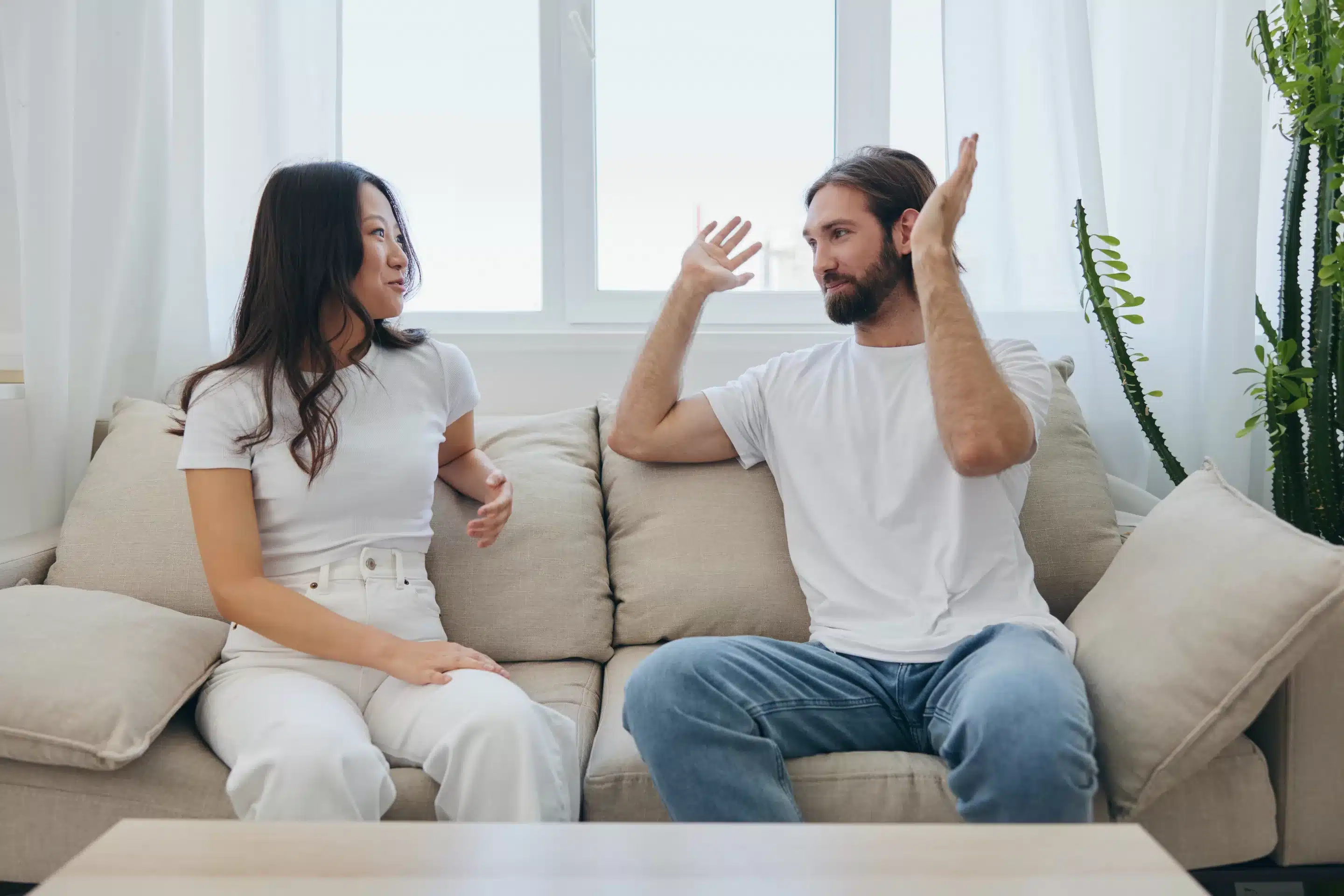
Resources
To learn more about iPill

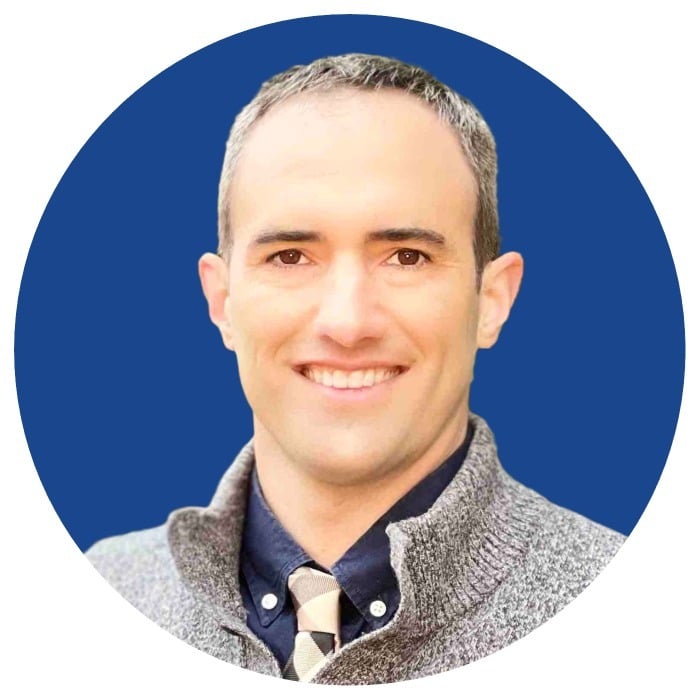 Bruce Bassi
Bruce Bassi